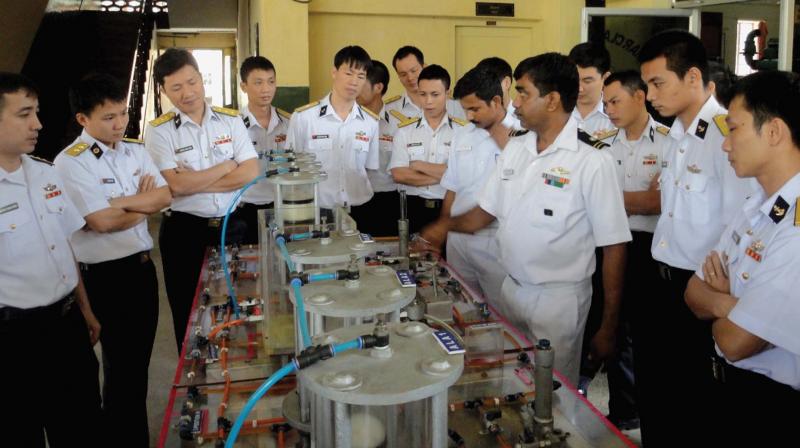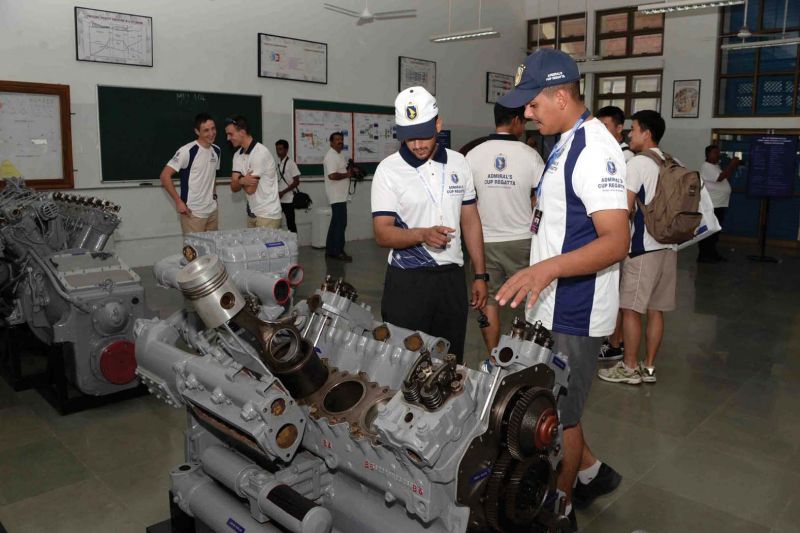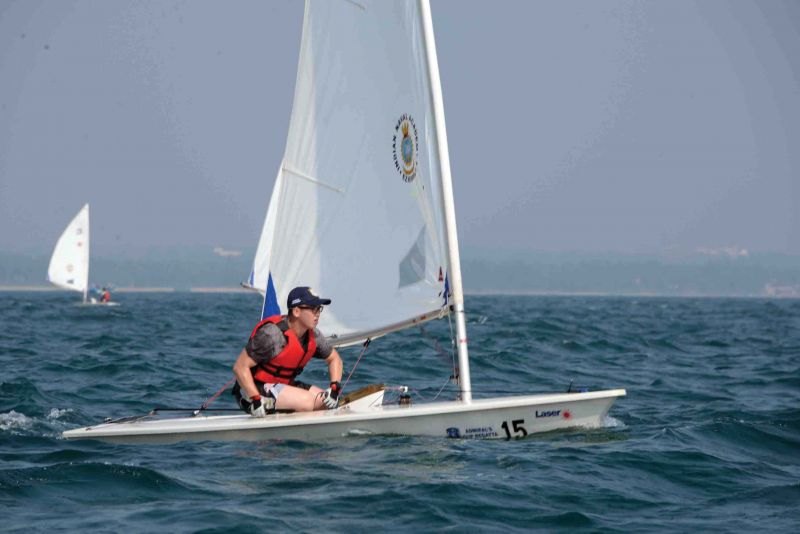The seas and beyond them

Navies often take their nations far overseas. Some in pursuing operational missions, others in promoting extra-regional national interests, and yet others in protecting dispersed national territory or investment. All these, however, represent the traditional military role. Indian Navy’s outreach in the Indian Ocean, however, is characterised not just by the formidable punch it has packed within, but also by a very credible, albeit more benign, instrument of national capability: training diplomacy. The Indian Navy has systematically set up professionally rewarding and mutually beneficial training ties with a large number of navies in the region and the courses range from ab-initio officers’ training at the Indian Naval Academy to the recently instituted Regional Maritime Security Course for senior-ranked officers. Its specialist training includes communication and electronic warfare, navigation and fighter aircraft direction, anti-submarine warfare, gunnery and missile warfare and hydrography; the training repertoire also includes disciplines such as submarine operations, aviation, diving, medicine, provost and regulating, and physical training.
 Foreign naval personal at the training facility: Every training programme at Southern Naval Command is charted at least one year in advance, and every day of the course is meticulously planned.
Foreign naval personal at the training facility: Every training programme at Southern Naval Command is charted at least one year in advance, and every day of the course is meticulously planned.
It also offers friendly nations training experiences on its ships - to cadets, midshipmen and officers for bridge watch-keeping, engine room watch-keeping and electrical competency training. It also routinely provides international officers unique and life-changing experiences on its sail training ships. Unsurprisingly, therefore, the number of foreign trainees in the Navy has seen a quantum jump in recent years. While nearly 14,000 foreign trainees from nearly 40 nations have passed through the portals of the Navy’s diverse training establishments over the past four decades, over 1000 vacancies have been offered to friendly nations this year alone. Of these, over 500 officers and sailors from 23 nations find themselves in the Navy’s training units today, working shoulder-to-shoulder with their Indian counterparts and soaking in enriching experiences of living in and understanding India. The Navy ensures that they get a ring-side view of Indian society, culture, traditions and way of life.
 Foreign teams participate in the Admiral's Cup Regatta at Indian Naval Academy at Ezhimala in Kannur. — FILE
Foreign teams participate in the Admiral's Cup Regatta at Indian Naval Academy at Ezhimala in Kannur. — FILE
The Kochi-based Southern Naval Command is the training command of the Indian navy and responsible for every programme Navy offers –whether to Indian or foreign personnel. Every training programme is charted at least one year in advance, and every day of the course is meticulously planned. They may begin with providing English language training and sufficient pre-course study material for technical and specialisation courses through Indian missions abroad. When they arrive in India, it presents them special distinguishing badges that they sport with pride, on successful completion of their training, it awards them a certificate they value a lot.
Some trainees are also awarded prizes and trophies for excelling in their courses. The Navy has also created a dedicated website that updates its overseas alumni on matters of interest to them and provides them a means to remain linked to each other. A peripheral initiative perhaps, but very significant to the Navy’s training outreach is its conduct of the Admiral’s Cup International Sailing Regatta since 2010. This event not only expands its training cooperation with the navies of the world further, but also promotes sail training and encourages personal interaction among junior officers of various nations, all with the aim of enhancing mutual understanding. Conducted at the Indian Naval Academy each year, this event saw the participation of 24 nations in 2016. In an era when rivalries, vulnerabilities, tempers and uncertainties alike are on the rise in the world’s oceans, it is remarkable that the Indian Navy’s training diplomacy represents a silent, but powerful force of collaboration and cooperation in the region.
The writer is chief staff officer (training), Southern Naval Command.

